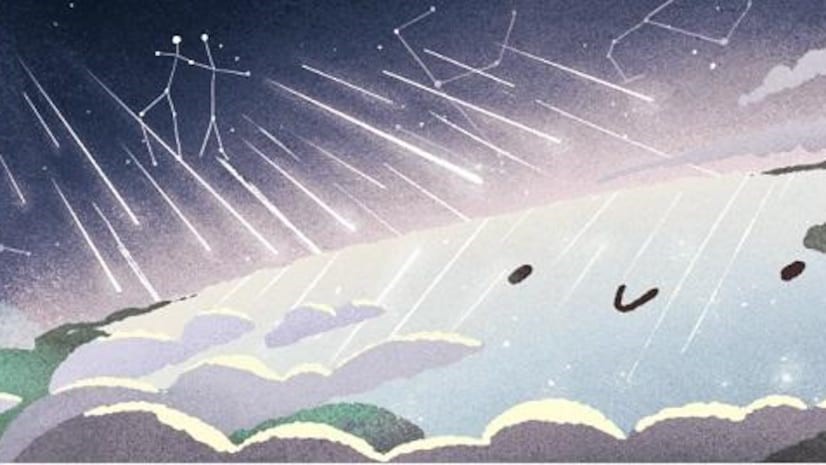Description

Disclaimer: Copyright infringement not intended.
Context
- The Leonid meteor shower, an annual cosmic event originating from the debris of Comet Tempel-Tuttle, is set to dazzle the skies from November 3 to December 2, with the peak activity expected on the evening of November 17-18.
Details
About the Leonid Meteor Shower
- Comet's Debris Trail: Comet Tempel-Tuttle's passage near the sun leaves behind a trail of dust and gas, forming a dense cloud of debris. As Earth crosses this debris trail annually in mid-November, it leads to the Leonid meteor shower. The Leonid meteor shower is named after the constellation Leo.
- Meteor Appearance: The fast-moving dust particles from the comet's trail enter Earth's atmosphere at high speeds, creating bright streaks of light known as meteors or shooting stars.
When and Where to Watch in India
- Shower Duration: The Leonid meteor shower spans from November 3 to December 2, with the peak expected on the night of November 17-18.
- Visibility Across India: The meteor shower will be visible throughout India, offering a chance to witness up to 15 meteors per hour originating from the Leo constellation.

Historical Significance
- Historical Meteor Storms: The Leonid meteor shower has historically produced some of the most impressive meteor storms, notably the storms in 1833 and 1966, with rates exceeding thousands of meteors per hour.
- Scientific Observations: These historic events prompted significant scientific interest and advancements in the understanding of meteor showers and their origins.
Other Meteor Showers in 2023
Geminids:
- Activity Period: Active from December 4-20, peaking from December 14-15.
- Unique Traits: Originating from the Gemini constellation, the Geminids are distinct due to their association with the asteroid 3200 Phaethon, setting them apart from typical comet-related meteor showers.
Ursids:
- Activity Period: Active from December 17-26, peaking from December 22-23.
- Source: The Ursids Meteor Shower occurs as Earth encounters debris from Comet 8P/Tuttle, often producing faint meteors with short tails, requiring patience for observation.
What Are Meteor Showers?
- Meteor showers are periodic celestial events characterized by an increased number of meteors or "shooting stars" visible in the Earth's night sky.
Causes of Meteor Showers:
- Comet Debris: Most meteor showers originate from debris trails of comets as they orbit the Sun. When Earth crosses these trails, debris particles enter the atmosphere, causing meteor showers.
- Asteroid Trails: Some showers, like the Geminids, originate from asteroid debris. The Geminids are unique as they arise from the debris of asteroid 3200 Phaethon.
Types of Meteor Showers:
- Regular Annual Showers: These occur predictably each year as Earth crosses the same debris trails, producing showers like the Perseids, Leonids, and Quadrantids.
- Variable Showers: Occasional meteor showers, such as meteor storms, showcase significantly higher meteor rates than usual, sometimes reaching hundreds or even thousands of meteors per hour.
Notable Meteor Showers:
- Perseids: Active in mid-August, the Perseids are among the most popular meteor showers, originating from the debris of Comet Swift-Tuttle.
- Geminids: Occurring in mid-December, the Geminids stand out due to their association with asteroid 3200 Phaethon.
- Leonids: Visible in mid-November, the Leonids are linked to Comet Tempel-Tuttle and have historically produced impressive meteor storms.
- Quadrantids: Active in early January, the Quadrantids exhibit a short and intense peak.

Conclusion
Meteor showers offer a mesmerizing glimpse into the wonders of the cosmos, providing captivating displays of shooting stars.
|
PRACTICE QUESTION
Q. Which of the following statements about meteor showers is/are correct?
1. Meteor showers occur when Earth passes through debris trails left behind by asteroids only.
2. The Perseids meteor shower is associated with Comet Swift-Tuttle.
3. Geminids meteor shower occurs annually in mid-December and is related to the debris of Comet Tempel-Tuttle.
Options:
a) Only Statement 1 and Statement 2 are correct.
b) Only Statement 2 and Statement 3 are correct.
c) Only Statement 1 and Statement 3 are correct.
d) All three statements are incorrect.
Answer: d)
|











